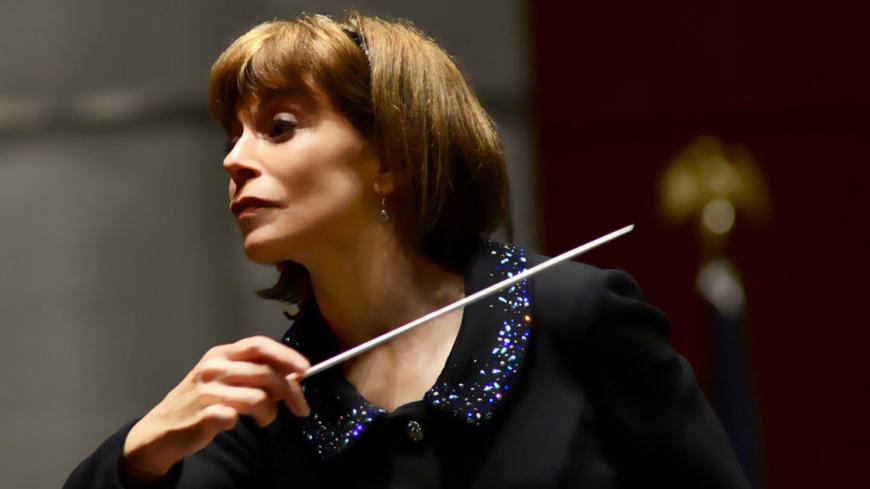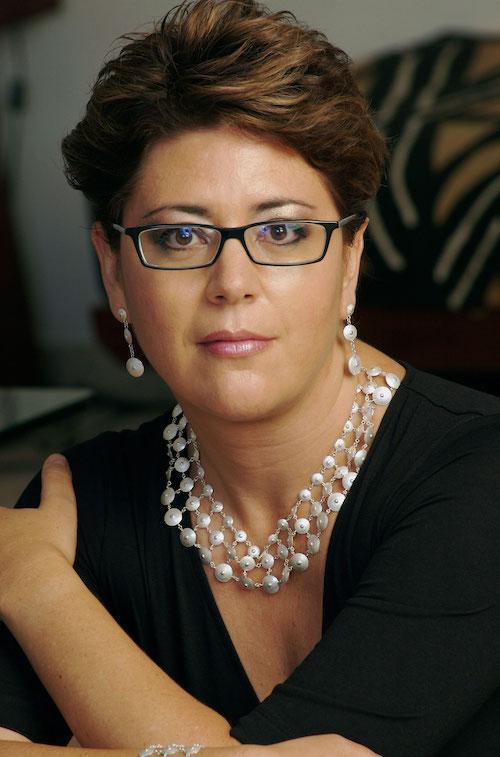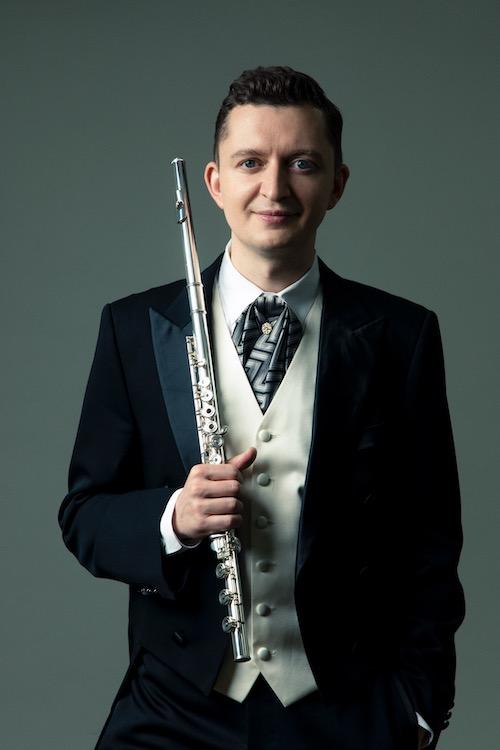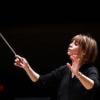
Symphony Silicon Valley — which is changing its name to Symphony San José, to honor the city where it actually performs — began its 2021–2022 season on Saturday, Oct. 2, with a full blast of charging ahead. President Andrew Bales explained from the stage of the California Theatre before the concert that management wants a local orchestra for a local audience, and declared that it was time to resume that live relationship.
Accordingly, vaccinations were required and checks for documentation were made at the door. Everyone — musicians (except the wind and brass players), staff, and audience alike — wore masks. But no other accommodations were made to the pandemic. This was a full two-hour concert with intermission, unlike the abbreviated one-hour shows some groups are doing. Audience seating was not spaced out but packed as usual. The regular pre-concert talk, from violinist Randall Weiss, went ahead. Even the guest conductor was the same as usual, for JoAnn Falletta has also led October concerts in each of the last two actually performed seasons.

The one other change was the installation of video screens by the side of the stage, a feature I had only previously seen in a concert hall at the Pacific Symphony in Orange County. As there, video isn’t really necessary here for the audience to see the orchestra, and it doesn’t help much to see the conductor’s face if she’s wearing a mask. The feed was taken from seven imperceptible cameras around all sides of the orchestra, controlled by an unnamed musician in a booth. The video was not cripplingly distracting, and — except for a hesitancy about showing the trombones in full cry — the controller chose the views judiciously.
The concert’s centerpiece was the world premiere of a flute concerto by the noted Mexican composer Gabriela Ortiz, who was recently acclaimed for her choral-orchestral piece Yanga for the Los Angeles Philharmonic. Denis Bouriakov, that orchestra’s principal flutist, was soloist for Saturday’s concerto. He substituted for the dedicatee and intended artist, Marisa Canales, who suffered an injury. Few soloists, I imagine, would take on a completely unfamiliar piece at about a week’s notice, but Bouriakov, armed with the written music, did well.
The concerto is titled D’Colonial Californiano, inspired by the eclectic architecture of colonial California, a mixture of Spanish, Mexican, indigenous, and original elements. This evolved into Colonial Revival in the statehood period, which was then imitated in upscale neighborhoods of Mexico City whence Ortiz hails. Ortiz aims at emulating this sequence of mixtures, resulting not in a potpourri but a blended style familiar to listeners of other works by her.
The music was bustling and energetic, full of complex rhythms evocative of, but not copying, those of Mexican popular music. The 15-minute, single-movement work was divided into named sections, including ones citing Stravinsky and Ives in their titles. These composers were not obvious sources of material or stylistic elements for Ortiz. They were more generally inspirations for their boldness and imagination.

The orchestration tended toward the light and brightly-pitched. The solo flute jumped merrily around it. Whenever the orchestra burst into something particularly vehement, the flute just took a break instead of being drowned out. Much of the time, the flute acted as a section leader for a small ensemble of wind and brass instruments. This made an attractive and distinctive sound. Winds also dominated the occasional quieter sections while the strings held a motionless base underneath.
In keeping with the decree of the late Symphony board member Bob Kieve, who said that every concert should have a “blockbuster” work on it, Falletta surrounded this premiere with some of the best-known music from the 19th-century repertory: Mendelssohn’s Midsummer Night’s Dream Overture and Scherzo, and Dvořák’s Symphony “From the New World.”
These received solid, enjoyable performances, technically admirable while a little rough and raw in texture. The Mendelssohn accordingly came out more earthy than airy. The Dvořák was driven and tense throughout the entire work, even in the Largo which powered through what other performances take as slight pauses. Patricia Emerson Mitchell’s English horn solo here, vibrato-filled and emotional, was a highlight. The orchestra’s skill is worthy of any name that management wants to give it; if it still needs a little polish, that will come after the players are further recovered from a 20-month break.




